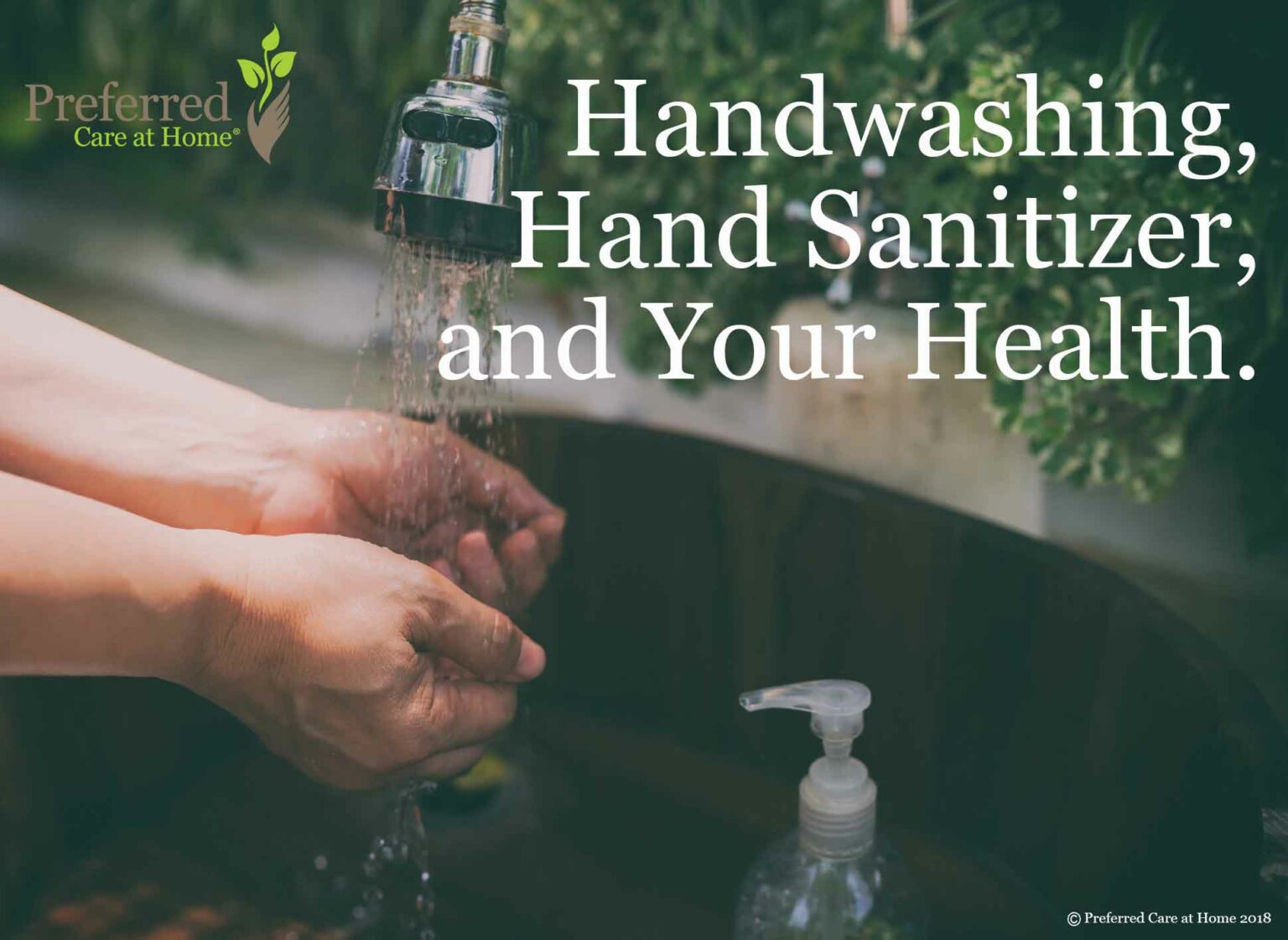Handwashing, Hand Sanitizer, and Your Health
Published February 6, 2018 by Francesca Robinson, MA in Senior Health & Wellness

The Center for Disease Control (CDC) calls handwashing a “do-it-yourself” vaccine and it only involves five simple steps–Wet, Lather, Scrub, Rinse, and Dry.
I have a daughter in preschool, which means there is a new bug being passed around each week it seems. Colds, stomach bugs, pink eye, the flu, every time I pick her up I resist the urge to bathe her in hand sanitizer. The first thing we do when we walk through the door of our home is wash those germy little hands.
Thankfully, the simple act of washing one’s hands does in fact reduce the spreading of illness and disease. The Center for Disease Control (CDC) calls handwashing a “do-it-yourself” vaccine, and it only involves five simple steps–Wet, Lather, Scrub, Rinse, and Dry:
- Wet your hands with clean, running water (warm or cold), turn off the tap, and apply soap.
- Lather your hands by rubbing them together with the soap. Be sure to lather the backs of your hands, between your fingers, and under your nails.
- Scrub your hands for at least 20 seconds. Need a timer? Hum the “Happy Birthday” song from beginning to end twice.
- Rinse your hands well under clean, running water.
- Dry your hands using a clean towel or air dry them.*
Handwashing with soap and water is the best way to fight germs and microbes, but if for some reason you are unable to wash your hands with water than the use of hand sanitizer is an efffective option when hands aren’t visibly dirty (i.e. dirt, grease, etc). In fact, hand sanitizer is the preferred method of hand cleaning in the healthcare setting due to its accessibility and effectiveness in removing dangerous germs. When using hand sanitizer make sure the alcohol content is at least 60%.
Handwashing is a simple and effective way to not only guard against contracting illness but spreading it as well. As senior home care professionals and caregivers, it is our duty and responsibility to do the best we can to protect the vulnerable–namely our elderly loved ones. Here are a list of activities that should always include handwashing:
- Before, during, and after preparing food
- Before eating food
- Before and after caring for someone who is sick
- Before and after treating a cut or wound
- After using the toilet
- After changing diapers or cleaning up a person who has used the toilet
- After blowing your nose, coughing, or sneezing
- After touching an animal, animal feed, or animal waste
- After handling pet food or pet treats
- After touching garbage*
While we all know the importance of washing our hands, perhaps this article can serve as a gentle reminder to wash your hands–not only for your own health, but for the health of those under your care.
*Source: CDC
If you have questions about senior home
care services or if you want to start care:
Related Posts

January 27, 2025
Is There a Food Allowance Card for Seniors?
Jody Guerrieri, RN.

January 27, 2025
What Causes Glassy Eyes in the Elderly?
Jody Guerrieri, RN.

January 27, 2025
What Age Is Considered a Senior Citizen?
Jody Guerrieri, RN.
Helping seniors age in place, with dignity & grace.